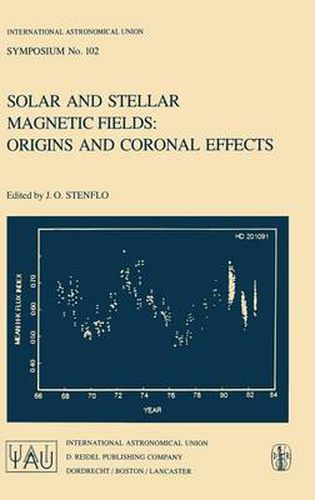Readings Newsletter
Become a Readings Member to make your shopping experience even easier.
Sign in or sign up for free!
You’re not far away from qualifying for FREE standard shipping within Australia
You’ve qualified for FREE standard shipping within Australia
The cart is loading…






This title is printed to order. This book may have been self-published. If so, we cannot guarantee the quality of the content. In the main most books will have gone through the editing process however some may not. We therefore suggest that you be aware of this before ordering this book. If in doubt check either the author or publisher’s details as we are unable to accept any returns unless they are faulty. Please contact us if you have any questions.
Traditionally, solar and stellar physics have been two separate branches of astronomy, which independently of each other have developed their own scientific goals and methods. During the last decade, however, we have witnessed a gradual convergence of these two areas: The solar physicists realize more and more that the sun has to be seen as a special case in a large family of stars of various properties. A more complete understanding of the sun can only be achieved by considering it in this broader context. The stellar physicists on the other hand have become aware that the detailed knowledge of the physical processes that the solar physicists have reached has a more general significance and can be applied to a variety of other astrophysical objects. Observational techniques developed in solar work can frequently be adapted for other stars as well. This unified approach to solar and stellar physics is often called the solar-stellar connection . One main goal of this approach has been to understand the general nature and causes of stellar activity. The pioneering and visionary program to search for activity cycles on other stars started by Olin Wilson at the Mount Wilson Observatory 16 years ago has born fruit: in his sample of 91 stars, cyclic behaviour similar to that of the sun is found to be quite common, but many stars also show irregular activity fluctua.tions of large amplitude.
$9.00 standard shipping within Australia
FREE standard shipping within Australia for orders over $100.00
Express & International shipping calculated at checkout
This title is printed to order. This book may have been self-published. If so, we cannot guarantee the quality of the content. In the main most books will have gone through the editing process however some may not. We therefore suggest that you be aware of this before ordering this book. If in doubt check either the author or publisher’s details as we are unable to accept any returns unless they are faulty. Please contact us if you have any questions.
Traditionally, solar and stellar physics have been two separate branches of astronomy, which independently of each other have developed their own scientific goals and methods. During the last decade, however, we have witnessed a gradual convergence of these two areas: The solar physicists realize more and more that the sun has to be seen as a special case in a large family of stars of various properties. A more complete understanding of the sun can only be achieved by considering it in this broader context. The stellar physicists on the other hand have become aware that the detailed knowledge of the physical processes that the solar physicists have reached has a more general significance and can be applied to a variety of other astrophysical objects. Observational techniques developed in solar work can frequently be adapted for other stars as well. This unified approach to solar and stellar physics is often called the solar-stellar connection . One main goal of this approach has been to understand the general nature and causes of stellar activity. The pioneering and visionary program to search for activity cycles on other stars started by Olin Wilson at the Mount Wilson Observatory 16 years ago has born fruit: in his sample of 91 stars, cyclic behaviour similar to that of the sun is found to be quite common, but many stars also show irregular activity fluctua.tions of large amplitude.